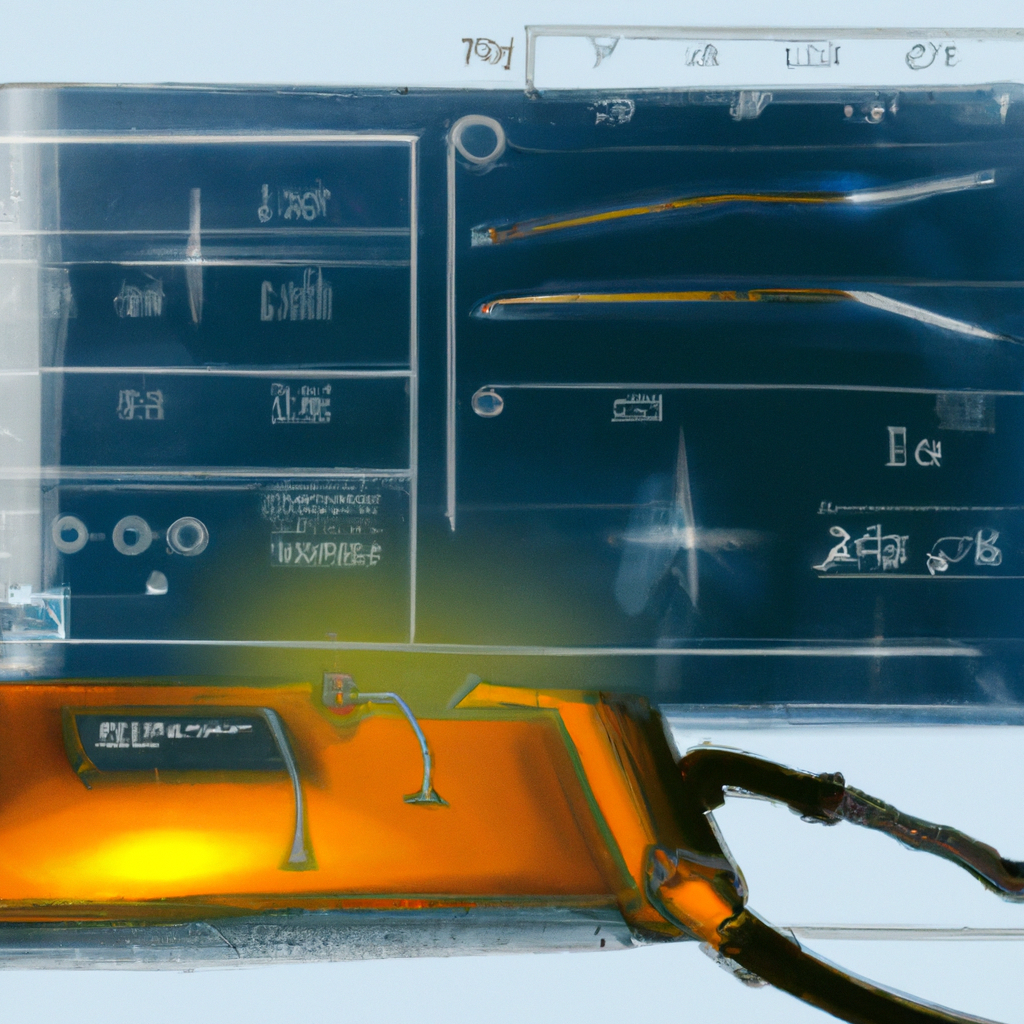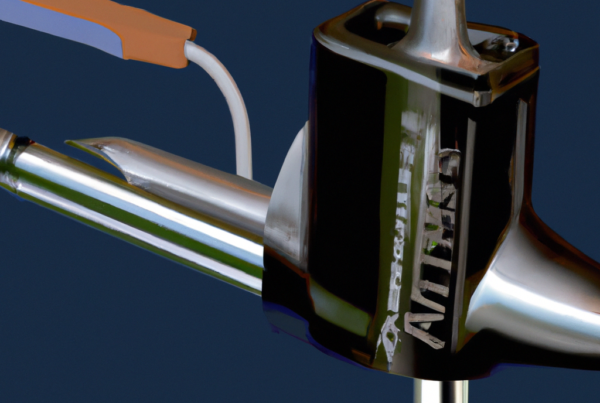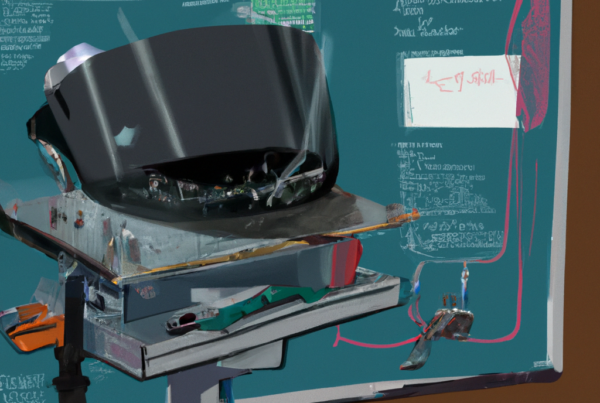Are you looking to measure the output of your welder? Do you want to ensure that your welding job is done perfectly and to the highest standards? Knowing how to measure the output of your welder is essential for guaranteeing a quality result. Being able to monitor your welder’s output accurately and consistently will enable you to do the job right the first time, every time. Whether you’re a professional welder or an amateur enthusiast, understanding how to measure welder output is a vital skill. Read on to learn more about the process!

What Is Measuring Welder Output?
Measuring the output of a welder is a crucial step in ensuring the welds are of the highest quality. Here is a step-by-step guide on how to measure welder output:
1. Check the weld specifications. These are usually indicated on the welding machine or on your welding drawings. You will need to know the type of the weld, the voltage, and the amperage.
2. Set the welding machine to the specifications. Make sure that the voltage and amperage are correct for the weld you are about to make.
3. Connect the welding leads to the workpiece. Make sure that the leads are properly connected and that the welding equipment and the workpiece are properly grounded.
4. Set up the welding machine to the correct welding parameters. Make sure that the welding parameters such as arc length, arc current, and welding speed are all set correctly.
5. Begin welding. As you weld, measure the output of the welding machine by using a multimeter. It is important to measure the output of the welding machine at the beginning of the welding process and throughout the welding process to ensure that the welds are of the highest quality.
6. Check the welds. After welding, check the welds visually and with a penetrant test. This will help you determine if the welds are of the highest quality.
By following these steps, you can easily measure the output of a welder and ensure that the welds are of the highest quality.
What Tools Do I Need to Measure Welder Output?
To measure welder output, you will need a few tools:
- Voltmeter – to measure voltage
- Ammeter – to measure amperage
- Multimeter – to measure both voltage and amperage
- Welding helmet – to protect your eyes
Use the voltmeter or multimeter to measure the voltage of the welder. The voltage should range between 80 and 120 volts. Then, use the ammeter or multimeter to measure the amperage output of the welder. The amperage should be between 15 and 30 amps. Finally, check the welding helmet to ensure the arc light is not too bright.
How Do I Test the Welder Output?
Testing the output of a welder is a relatively straightforward process. Here are the steps to follow:
- Connect the welder to the power supply and ensure it is correctly installed.
- Set the welding current and voltage according to the manufacturer’s instructions.
- Verify the correct current and voltage settings on the welder.
- Connect the welding electrode to the welder.
- Strike an arc between the electrode and the workpiece.
- Measure the output current and voltage with a welding ammeter.
- Compare the measured output to the desired output.
- Adjust the settings as needed until the desired output is achieved.
The output of a welder should be around 80A (maximum 120A). Adjusting the settings as necessary will ensure the desired output is achieved.
What Are the Factors That Affect Welder Output?
Welder output is determined by the amount of electrical current and voltage that pass through the welding arc. The output of a welder is measured in amperes (amps) and is dependent on several factors.
The following factors affect the output of a welder:
- Wire size and type: The size and type of wire used in the welding process impacts the amperage output.
- Arc length: Longer arcs require more current to maintain the arc.
- Voltage: Higher voltage will result in higher amperage.
- Joint fit-up: A proper fit-up of the two pieces being welded will help reduce amperage.
- Arc starting: Poor arc starting techniques can increase the amperage.
- Welding speed: Slower welding speeds often require higher amperage.
Measuring the output of a welder can be done with a welding ammeter. This device is placed in series with the welding circuit and measures the current in amperes. It is important to use the proper amperage setting for each welding application to ensure a quality weld.
How Do I Interpret the Results of My Measurement and Calculations?
Interpreting the results of your measurement and calculations can help you to identify potential problems, make improvements, and ensure that output is within acceptable tolerances. Here are a few steps to help you interpret the results:
- Check the calibration of your measuring equipment. If the equipment is not properly calibrated, your results may be inaccurate.
- Compare the results with the expected values. If the output is outside of the expected range, you should investigate the cause.
- Look for trends or patterns in the results. If certain measurements are consistently higher or lower than expected, you may need to adjust your process.
- Check for sources of error. Review your calculations and make sure that no mistakes were made that could have affected the results.
- Adjust the process as needed. If any adjustments need to be made to improve the results, take the necessary steps.
By carefully interpreting the results of your measurements and calculations, you will be able to ensure that the welder output is within acceptable tolerances.
What Are the Different Types of Welder Output?
Welders produce output in the form of current (amps) and voltage (volts). To measure the output of a welder, the following should be taken into consideration:
- Amperage: This is the amount of current output from the machine and is measured in amperes (amps). It is the most important factor in determining the welding strength and quality.
- Voltage: This is the amount of voltage output from the machine and is measured in volts. Higher voltage allows for a greater amount of heat to be applied to the weld.
- Power factor: This is the ratio of the real power being used by the welder to the apparent power. It is measured as a percentage.
- Duty cycle: This is the amount of time the welder can be used continuously without overheating. It is measured as a percentage.
By understanding the different types of welder output, it is possible to accurately measure the output of a welder and ensure that it is capable of producing the necessary welding strength and quality.
How Do I Calculate the Efficiency of My Welder Output?
Measuring the output of your welder is essential in assessing its performance. Here are the steps on how to measure the efficiency of your welder output:
- Test the voltage output of your welder. Make sure to connect the welder to a power source and then measure the voltage output with a multimeter. This will give you an indication of how much electricity is being used by the welder.
- Measure the current output of your welder. You can use an ammeter to measure the current output of your welder. This will tell you how much current is being used by the welder.
- Calculate the efficiency. Once you have measured the voltage and current output of your welder, you can calculate the efficiency by dividing the voltage by the current. The efficiency should be around 80% (maximum 120%).
By following these steps, you will be able to measure the efficiency of your welder output.
What Are the Safety Precautions to Consider When Measuring Welder Output?
When measuring welder output, it is important to take safety precautions to avoid potential accidents or injuries. Here are some tips to keep in mind:
- Always wear safety glasses and protective gear such as a welding helmet, gloves, and clothing.
- Make sure the welding area is clear of flammable materials.
- Ensure that all electrical cords and connections are properly rated for the welder’s voltage and amperage.
- Always use the correct type and size of welding rod.
- Limit the amount of time spent welding by taking regular breaks.
- Do not touch hot metal or sparks.
- Avoid overloading the welder by setting the correct current and voltage.
By taking these safety precautions, you can ensure that you measure the welder output safely and accurately.
What Are the Quality Requirements for Welder Output Measurements?
Welders must adhere to quality standards when measuring their output. This is because incorrect measurements can lead to structural failure and safety hazards. The following are the quality requirements for welder output measurements:
- Measurements must be accurate and precise.
- Measurements should be taken using calibrated tools and instruments.
- Welders should be aware of the material characteristics, such as its thickness, type, and strength.
- Measurements must be taken in accordance with the relevant welding codes and standards.
- Welders should report any discrepancies with measurements to supervisors.
- Welders should review and document all measurements taken.
How Do I Document the Welder Output Measurement Results?
Measuring the output of a welder is an important part of any welding job. Below are the steps to follow when measuring the output of a welder:
- Set the welding machine to the desired amperage and voltage settings.
- Connect the welder to the workpiece with the appropriate welding cable and electrodes.
- Turn on the welding machine and adjust the welding arc to the desired length.
- Measure the current (amperage) with an ammeter. This should be done at the welding machine itself, not at the workpiece.
- Measure the voltage at the welding machine.
- Record the measurements in a logbook, along with the type of electrode, the joint configuration, and any other relevant information.
- Compare the measurements to the manufacturer’s specifications for the welding machine and electrodes.



